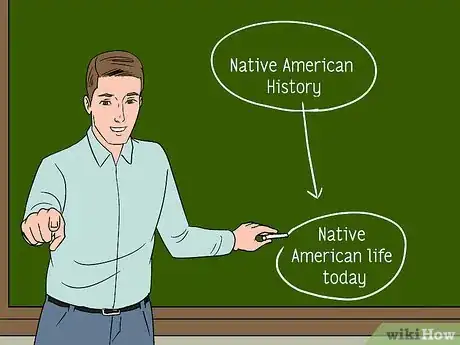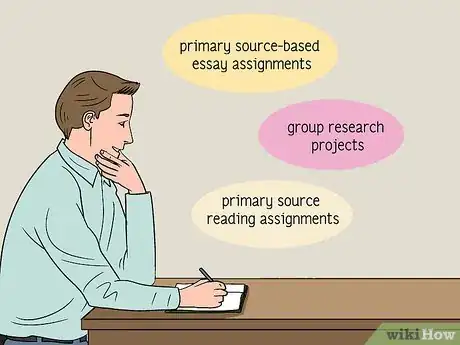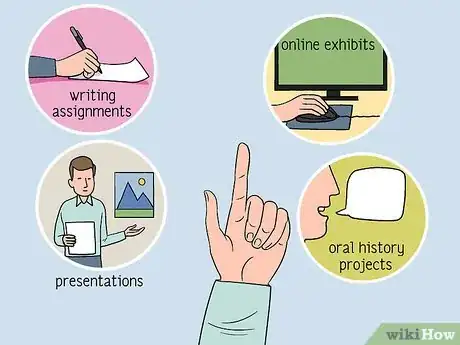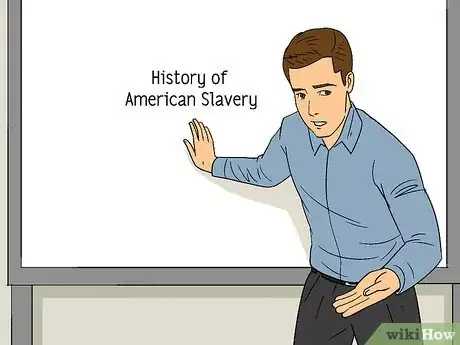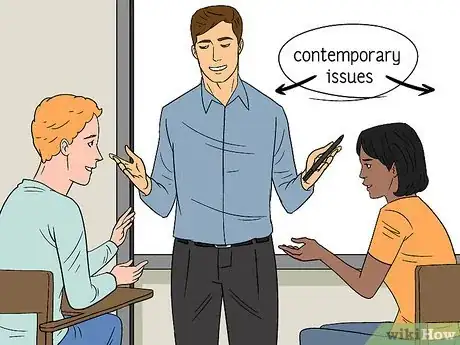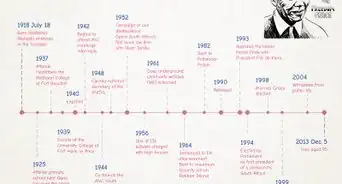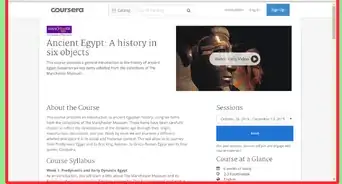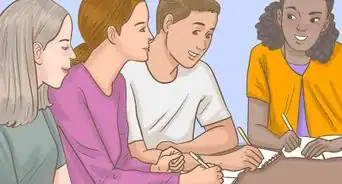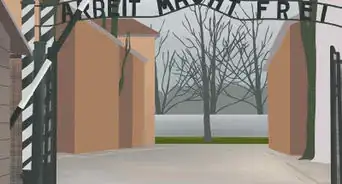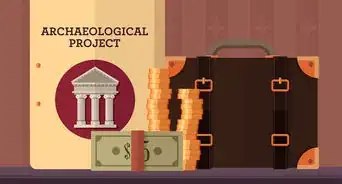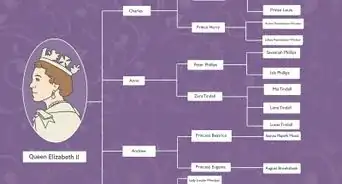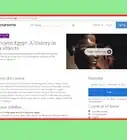This article was co-authored by wikiHow Staff. Our trained team of editors and researchers validate articles for accuracy and comprehensiveness. wikiHow's Content Management Team carefully monitors the work from our editorial staff to ensure that each article is backed by trusted research and meets our high quality standards.
There are 10 references cited in this article, which can be found at the bottom of the page.
This article has been viewed 19,091 times.
Learn more...
History is a fascinating and important subject that helps students understand how the world came to be as it is. While teaching history can be both fun and rewarding, it can also be challenging to keep students engaged and interested. By using best teaching practices, getting creative with your classroom activities, and teaching history inclusively, you can appeal to even the most resistant students and help them truly enjoy learning about the past.
Steps
Using Best Teaching Practices
-
1Select a few major themes to focus on. When developing your history class curriculum, pick just a few major themes and/or topics to focus on. Rather than trying to cover as much as possible, focus on ways you can foster useful skills. While you may have to adhere to some institutional requirements, it’s impossible for you to teach your students everything about your subject. By diving deeper into just a few themes or topics, students will have more opportunities to think critically about and understand the past.[1]
- For example, if you are teaching modern European history for college students, one of the themes of the class could be identity formation. Then, you can discuss the ways in which major historical periods and events, such as the Reformation and World War II, both altered and informed how Europeans identified themselves over time.
- Instead of trying to cover everything on your topic, focusing on just a few topics or themes lets you clearly demonstrate historical causes and effects, as well as change over time.
-
2Make your subject relatable by connecting it to the present. When teaching history at any level, try to make it clear to the students on the first day of class why they should care about the subject. One of the best ways to do this is to make clear connections to the present. Students are much more likely to care about history if they understand how it is relevant to their lives.[2]
- For example, if you are teaching Native American history to middle or high school students, start the class with an exercise where the students write a paragraph on their understandings of Native American life today. You can then begin the lesson by demonstrating how certain U.S. policies and acts influenced how non-Native Americans have come to such understandings.
- A good way to make history relatable is to make connections to local history. For example, if you live in Atlanta and are teaching about the Civil War, spend some time talking about how the war impacted the local area. Doing so can help you grab the attention of students at any level.
Advertisement -
3Focus on teaching transferable skills. In most cases, the students in your class will not be budding historians. Rather, most will be taking history to fulfill a curriculum requirement. To make the course worthwhile for all students, focus on crafting lectures, discussions, activities, and assignments that will help students build skills that are useful in other fields, and in life in general.
- For example, primary source-based essay assignments can help students learn to make an informed argument and use concrete evidence to support their position.[3] History writing assignments can also help students enhance their writing skills.
- Group research projects, for example, can help students learn to collaborate with others and cooperate to present a finished project – something students will likely need to do in their careers later on.
- Primary source reading assignments help students think critically about what they read. This skill is useful for almost anyone who reads the news and gets conflicting information on various important topics.
-
4Avoid creating assignments that only test memorization skills. Instead, create assignments that show you what students can do with what they know, rather than how much they can know at any given time.[4] Writing assignments, presentations, online exhibits, or oral history projects, for example, give students an opportunity to dive deeper into historical subjects and concepts that reveal something new about the past.
- If you are teaching an art history class to middle school students, for example, instead of creating a multiple-choice test to see how many artists’ names students can remember, you could have each student contribute to an online exhibit about a specific period or artistic movement. Assign each student a different artist and have them select a few images to display on the site, write a short bio on the artist, and explain why and how their work was historically significant.
- For example, if you are teaching a high school European History class, instead asking the students to recite the definition of nationalism on a test, split the class into groups and assign a country. Have each group work together to create a presentation defining nationalism and explaining its development and impact on each country. Students will get a deeper understanding of what nationalism means and how it developed and impacted European countries differently over time.
-
5Engage with primary source materials regularly in class. Instead of telling your students what happened, let it unfold in front of them by regularly providing them with primary source documents.[5] Primary source documents allow students to uncover history for themselves, letting them not only learn history but be historians.
- For an in-class activity for any grade level, for example, break the class into small groups of 2 to 5 students. Provide each group with a set of 2 or 3 primary sources and ask them to discuss and present their observations to the class.
- Interspersing images, short film clips, and excerpts from personal letters into your lectures will help you grab and keep your students’ attention.
- If you are teaching a high school or college course on the Civil Rights Movement, for example, have students compare speeches given by Malcom X and Martin Luther King, Jr.
Getting Creative in the Classroom
-
1Let your students be the teacher from time to time. To ensure active participation in the class, give each of the students a topic at the beginning of the semester and have them each teach the class about their topics at various points during the semester.[6] Knowing that they will be teaching the class will encourage them to actively engage with the course materials.
- Teaching their peers about their topic can also help build confidence, as well as improve their public speaking and presentation skills.
- If you are teaching middle or high school students, you may want to limit their presentation time to 10 or 15 minutes. College or graduate students, however, will likely be able to handle the responsibility of teaching the whole class period.
-
2Utilize the internet to access historical resources in your classroom. While the internet can often be a distraction for students, it can also be utilized in class to help you teach about your subject. With the internet, you can help bring history to life by accessing photos, videos, and maps, or even doing a virtual tour of historic sites without ever leaving your classroom.
- Many museums, for example, have online exhibits and other resources that you can access right in your classroom.[7]
- Resources like Virtual Jamestown and the Chicago World’s Fair Virtual Simulation, for example, allow you to take a virtual tour of important historical sites that no longer exist.
-
3Get creative with a history detective-style assignment. To help students learn about history, think critically about primary resources, and enjoy their time in class, pick a historical “mystery” relevant to your subject and have students conduct research to try and solve it.[8] The students will then use their research to come up with an informed theory of what happened and present it to the class.
- For example, if you are teaching about European colonization, you could assign the students to investigate the Lost Colony at Roanoke. Or, for a myth-busters type assignment, you could have the students investigate this question: Did Pocahontas actually save John Smith’s life?
- These types of assignments work particularly well with younger students. It can be difficult to grab and hold the attention of elementary and middle school students. With a detective-style assignment though, younger students can have fun while engaging with the material.
-
4Have fun teaching history with historical reenactments. To both bring history to life and have fun with your class, use classroom materials, props, and costumes to stage a reenactment of an important historical event.[9] To ensure that your students are learning, assign each student a specific role ahead of time and have them research that role. During the reenactment, have each student speak as their assigned historical actor so that every other student can learn what their research revealed.
- If you are teaching a class on the Middle Ages, for example, to help students learn about the feudal system, try staging a reenactment of scenarios with a king, nobles, knights, and serfs.
- When planning a historical reenactment with your class, make sure that you pick an appropriate topic to avoid trivializing a more serious and possibly triggering event.
Teaching History Inclusively
-
1Use a variety of different types of primary resources. To help keep your students engaged and interested in your historical subject, try using a variety of different types of primary resources. Oral histories, images, personal narratives, letters, and political documents can make history come alive for your students while helping them improve their observation, interpretation, and critical thinking skills.[10]
- If possible and relevant to your subject, invite speakers to give their own oral histories in front of the class. If you are teaching about the Civil Rights Movement, for example, try to invite someone who actively participated in the movement to speak. You can record the session, which the students can then use as an oral history resource for later assignments.
-
2Include a variety of perspectives on your subject. To give your students a more accurate, multi-faceted, and more interesting account of your subject, include a wide variety of historical perspectives on the subject. Try to include not only a variety of historians’ perspectives, but also the historical actors themselves. While it may take some time for you to find resources produced by traditionally marginalized or suppressed perspectives, it will be well worth it for your students to understand the various interpretations of the past that impact present-day society and culture.[11]
- For example, if you are teaching about American westward expansion, include resources produced by Native Americans. Historical letters, speeches, and even contemporary online tribal museum exhibits produced by Native Americans will give your students a much more well-rounded account of what westward expansion meant for Americans from various cultures, locations, and backgrounds.
- If you’re teaching a college course on World War II, for example, you could include Japanese American perspectives on the war. Traditionally, teachers have portrayed the American role in World War II as that of liberators. By including Japanese American perspectives, however, you can demonstrate the real complexity of America’s role in the war.
-
3Address challenging topics and issues when relevant. No matter what historical subject you teach, you are bound to encounter topics that are difficult for you or some students to talk about.[12] While it may be tempting to gloss over difficult subjects to avoid any uncomfortable or challenging discussions, it is important that you confront difficult histories to give students an understanding of how such issues came about and how they inform the present.
- While often difficult to approach and discuss with students, the history of American slavery, for example, is crucial to understanding contemporary issues with racism and American history at large.[13]
- While it is important that you don’t shy away from difficult topics when teaching history, it is also important that you keep your students’ ages, capabilities, and prior knowledge of the subject in mind.
-
4Encourage civil and constructive discussions in the classroom. When talking about potentially difficult or divisive historical topics, it is important that the students leave the class feeling as though their opinions and perspectives were heard and respected. While students are bound to disagree with one another, as the teacher, you can set some ground rules that will ensure that student discussions are constructive rather than hurtful.[14] The way that you do this will depend largely on the topic, class size, and age of the students. Here are a few general suggestions:
- Encourage students to back up their statements and opinions with concrete evidence from the class.[15]
- Have a conversation about class discussions at the beginning of the semester. This will give you an opportunity to make clear to the students that while they may disagree, they should listen to one another without judgement.[16]
- Limit discussions to the historical context of a topic. Topics such as race, gender, and class can easily be tied to the present. While this is not necessarily a bad thing, if you find that the conversation is getting out of hand, encourage the students to halt any contemporary commentary and limit their comments to those specifically relevant to the historical significance of the topic.[17]
References
- ↑ https://www.theatlantic.com/education/archive/2014/05/how-i-teach-history/361459/
- ↑ https://www.theatlantic.com/education/archive/2014/05/how-i-teach-history/361459/
- ↑ https://www.theatlantic.com/education/archive/2014/05/how-i-teach-history/361459/
- ↑ https://www.theatlantic.com/education/archive/2014/05/how-i-teach-history/361459/
- ↑ https://www.washingtonpost.com/news/answer-sheet/wp/2013/05/16/how-to-teach-history-and-how-not-to/
- ↑ https://www.theguardian.com/teacher-network/teacher-blog/2013/sep/16/history-lessons-memorable-students-teaching
- ↑ http://www.teachercertification.org/a/tips-for-history-teachers.html
- ↑ https://www.pbs.org/opb/historydetectives/educators/lessonplan/crack-the-case-histories-toughest-mysteries/
- ↑ https://teachinghistory.org/nhec-blog/23628
- ↑ https://www.facinghistory.org/resource-library/teaching-strategies
- ↑ https://www.historians.org/jobs-and-professional-development/statements-standards-and-guidelines-of-the-discipline/statement-on-excellent-classroom-teaching-of-history
- ↑ https://www.npr.org/sections/ed/2018/02/04/582468315/why-schools-fail-to-teach-slaverys-hard-history
- ↑ https://www.npr.org/sections/ed/2018/02/04/582468315/why-schools-fail-to-teach-slaverys-hard-history
- ↑ https://www.nytimes.com/2016/09/28/learning/lesson-plans/talking-across-divides-10-ways-to-encourage-civil-classroom-conversation-on-difficult-issues.html
- ↑ https://www.nytimes.com/2016/09/28/learning/lesson-plans/talking-across-divides-10-ways-to-encourage-civil-classroom-conversation-on-difficult-issues.html
- ↑ https://www.nytimes.com/2016/09/28/learning/lesson-plans/talking-across-divides-10-ways-to-encourage-civil-classroom-conversation-on-difficult-issues.html
- ↑ https://www.nytimes.com/2016/09/28/learning/lesson-plans/talking-across-divides-10-ways-to-encourage-civil-classroom-conversation-on-difficult-issues.html

